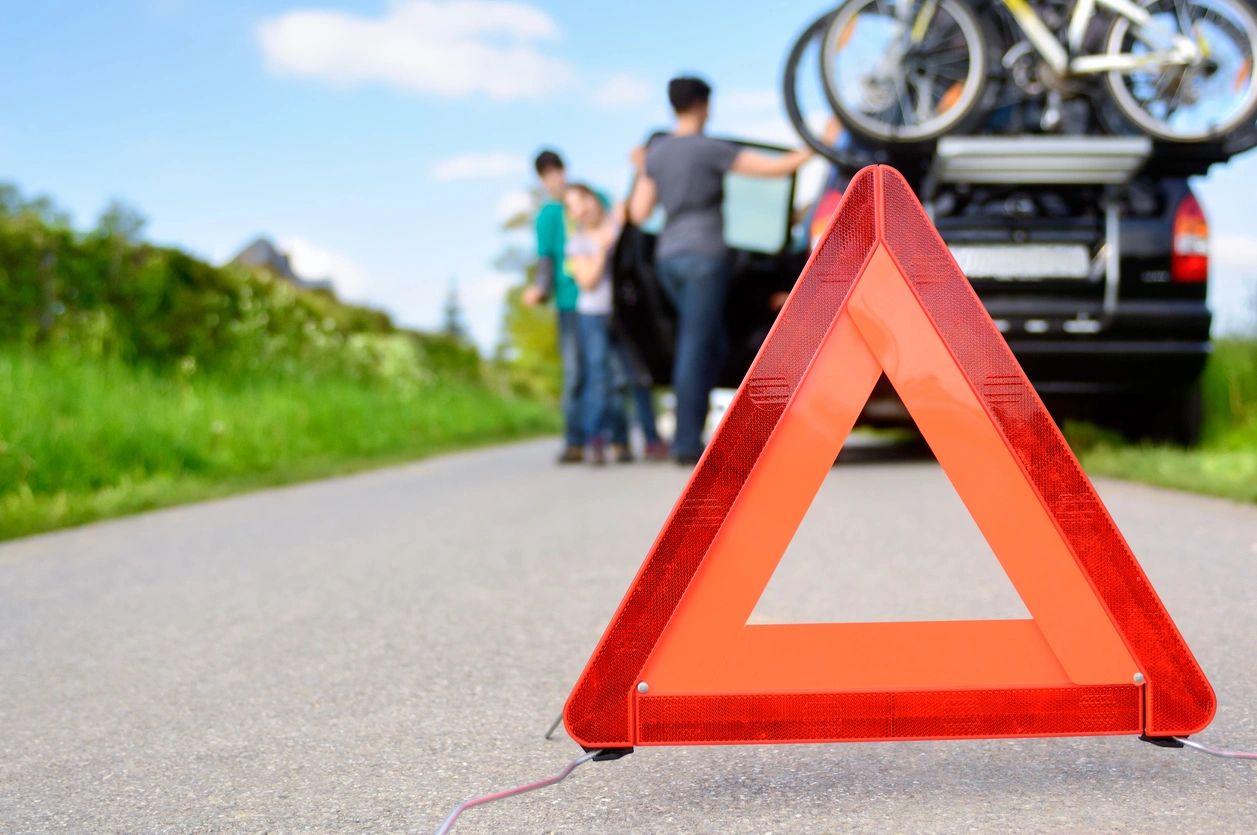TRAFFIC COLLISION EXCEPTION - CVC-40300.5
ORANGE COUNTY'S "BEST" OR "TOP-RATED" DUI DEFENSE LAWYERS RATED BY SUPER LAWYERS, ORANGE COUNTY'S "TOP-RATED" DUI DEFENSE ATTORNEYS
Details You Should Know About Traffic Collision Laws
TRAFFIC COLLISION DETENTIONS
The definition of the term “traffic accident” arises occasionally in the factual situations where the defendant was first seen by the police while he was changing a flat tire or doing roadside repairs. Common sense would dictate that these situations are not traffic accidents, but no authority directly holds that way. It is suggested that the term “traffic accident” be defined as follows:
A traffic accident is an unexpected happening or event, involving one or more vehicles, caused by someone’s neglected duty or act forbidden by law, resulting in the loss of control of the vehicle, with the potential for harm to persons or damage to property, or caused by someone’s intentional act causing injury or damage.

An example of an application of this definition is the flat tire situation. A blowout from a road hazard would be an accident if there was a loss of control, but a tire that went flat without loss of control would not be. (Keep in mind that such situations may also result in blocking a roadway, another exception to the presence requirement (CVC § 40300.5).)
TRAFFIC COLLISION EXCEPTION - CVC-40300.5
The definition is based upon the following authority:
Webster’s Ninth New Collegiate Dictionary (1985)—An “accident” is an unforeseen, unplanned event or circumstance.
McNabb v. DMV (1993) 20 Cal.App.4th 832—Intentional act is an “accident” for CVC § 40300.5 purposes.
People v. Laursen (1985) 175 Cal.App.3d Supp. 1—Intentional act is an “accident” for hit and run (CVC § 20002) purposes.
Cowman v. DMV (1978) 86 Cal.App.3d 851—Actual damage to property or injury to persons is not required.
People v. Ashley (1971) 17 Cal.App.3d 1122—“Traffic” describes the type of the accident, not the place of the actual accident or traffic collision.
People v. Jordan (1977) 75 Cal.App.3d Supp. 1—“Accident” where moped with the engine off hit a curb.
The “Obstructing a Roadway” Exception
The obstructing a roadway exception to the presence requirement is not clearly defined, but CVC § 22400(a) provides some guidance to its meaning. It reads, in relevant part:
No person shall bring a vehicle to a complete stop upon a highway so as to impede or block the normal and reasonable movement of traffic unless the stop is necessary for safe operation or in compliance with the law.
Based upon this statute, one should argue that proving that the defendant obstructed a roadway for CVC § 40300.5 purposes, needs some evidence that the vehicle came to a complete stop, and that the normal and reasonable movement of traffic was obstructed.
The “Will Not Be Apprehended Unless Immediately Arrested” Exception
Note that the exception does not say, “…will not be immediately apprehended unless arrested,” which would make sense for stopping a drunk who is preparing to drive away in his car. Instead, it says “will not be apprehended unless immediately arrested.” Who’s to say that a person will not be apprehended unless immediately arrested? Detentions precede arrests, and the officer usually has the name and address of the suspect prior to any arrest. What is wrong with sending him a notice to appear or issuing an arrest warrant? It would appear that this exception is rather difficult for a prosecutor to establish in a motion to suppress evidence hearing.
The “May Cause Injury to Himself or Property” Exception
Funny the legislature did not include “may cause injury to another” in this exception, but it didn’t, and since each of the exceptions under CVC § 40300.5 requires reasonable suspicion that the suspect is under the influence, there must be something more that is required for this exception than a mere showing that the person is intoxicated. Any other interpretation of the statute would render the additional language of subsection (d) meaningless. If the legislature intended to dispense with the presence requirement for misdemeanor DUIs, it could have just said so. Instead, it required additional showings. Consider the situation where the suspect is on his doorstep and calmly preparing to enter his residence, as opposed to the stumbling drunk who is preparing to jump back in his car and drive away.
The “May Destroy or Conceal Evidence” Exception
This falls under other types of exceptions to the warrant requirement, which will be discussed more fully in other sections of this website.
Remember: CVC § 40300.6: Liberal Construction Should Be Limited
Regarding the Traffic Collision Exception - CVC-40300.5, CVC § 40300.6 mandates that CVC §40300.5 be liberally interpreted to “further safe roads and the control of driving while under the influence….” However, this statute’s language mandates this analysis only to the traffic accident exception:
Also regarding the Traffic Collision Exception - CVC-40300.5, Vehicle Code Section 40300.5 shall be liberally interpreted to further safe roads and the control of driving while under the influence of an alcoholic beverage or any drug in order to permit arrests to be made pursuant to that section within a reasonable time and distance away from the scene of a traffic accident.
Orange County DUI Attorneys Providing DUI Defense in Orange County - Laguna Hills, Laguna Beach, Orange
CALL NOW!
FREE CONSULTATION: (949) 235-2250



